FCA: Unfair preferences recovered from trust property must benefit creditors
The Federal Court has held that payment from trust property recovered as an unfair preference must be applied by trustee in bankruptcy for the benefit of creditors of the trust.
Lane (Trustee), in the matter of Lee (Bankrupt) v Commissioner of Taxation (No 3) [2018] FCA 1572
Background
Mr Lee was the sole trustee of the Warwick Lee Family Trust (the Trust). Prior to his bankruptcy, Mr Lee paid the sum of $322,447.58 to the Commissioner of Taxation (the Commissioner) in discharge of taxation liabilities arising from the operation of a Subway franchise operated by the Trust. Mr Lee had funded that payment by using $171,659.00 of his own funds and $150,788.58 funds of the Trust, in doing so he exercised his right of exoneration as trustee[1]. The right of exoneration is the right of the Trustee to discharge obligations incurred in their capacity as trustee directly from the assets of the Trust.
After the bankruptcy of Mr Lee, the Commissioner agreed to return the sum of $322,447.58 to the trustee in bankruptcy in response to an assertion that the payment to the Commissioner constituted an unfair preference under section 122 of the Bankruptcy Act 1966 (Bankruptcy Act).
The issue for determination by Derrington J was whether, upon the recovery of the funds from the Commissioner, the trustee in bankruptcy held all funds for the benefit of all creditors of the estate of Mr Lee (both in his personal capacity and in his capacity as trustee of the Trust) or whether the trustee in bankruptcy held the sum of $150,788.58 (representing the amount initially paid by Mr Lee from funds of the Trust) for the benefit of Trust creditors only[2].
The Commissioner contended that the former view prevailed, whereas the trustee in bankruptcy contended that the latter view prevailed[3].
Decision
In reaching his determination, his Honour noted that section 122 of the Bankruptcy Act operated without the need for an order of the Court; that is, the payment is avoided upon the making of a sequestration order if the provision is applicable[4].
His Honour noted that as a matter of practical reality, however, that although the effect of the provision is to void a transfer to which it applies, transfers in effect remain effectual until a trustee in bankruptcy takes steps to avoid it[5]. Significantly, his Honour also noted that if a trustee in bankruptcy’s action to establish that a transfer was avoided by virtue of section 122 was successful, the “title in the property is to be regarded as not ever having passed”[6].
After undertaking an analysis of the basis of the trustee in bankruptcy’s entitlement to recover the preferential payment pursuant to section 122 of the Bankruptcy Act, his Honour concluded that:
Mr Lee’s entitlement to use trust funds only arose by reason of his position as trustee and because the debt arose from the administration of the trust. Outside of his office as trustee, he was not entitled to pay the funds to the Commissioner nor did he have any entitlement to recover them when the payment was found to be void. It necessarily follows that the right to recover the payments from a transaction which was avoided was a right which was held for the benefit of the trust[7].
After careful analysis of the Commissioner’s contention that any repayment by the Commissioner of an equivalent amount to that paid to it by Mr Lee utilising the right of exoneration from the Trust would be held by the trustee in bankruptcy free of all trust obligations and could be used to discharge debts to non-trust creditors, his Honour concluded that:
If a trustee acquires a chose in action as a consequence of the operation of a trust, that chose in action is held pursuant to the trustee’s rights and obligations, no less than other trust property. In this case, the taxation liability which was discharged by the payment of trust funds to the Commissioner arose as a result of the operation of the trust and Mr Lee paid the amount of $150,788.58 out of the trust funds to discharge that liability and, pro tanto, it reduced the trustee’s equitable lien over the trust assets. He was only entitled to use that money by reason of his position as trustee and the rights and entitlements he acquired as a result. When the transaction was avoided by reason of the making of the sequestration order, the right to recover the payment only existed because of Mr Lee’s position as trustee. His right to recover the amount paid is subject to the trust obligation to use the trust funds for the purposes of the trust. It is not possible to hive off from the other rights and obligations of a trustee, the right to recover payments made for the purposes of the trust which have been avoided. The right is necessarily a constituent element of the bundle of rights and obligations of the trustee and no principle was referred to which suggests that a trustee might exercise such rights independently of the other trust obligations [8]. [underlining added]
Conclusion
The decision is of assistance given that the issue in contention was not the subject of any direct Australian authority[9].
It now stands as authority for the proposition that when funds paid by a trustee in exercising their right of exoneration from trust assets are recovered as an unfair preference pursuant to section 122 of the Bankruptcy Act, the repaid funds are themselves “subject to the obligation to use them in the manner required of the original funds, being for the purposes of discharging trust debts”[10].
It should be noted, however, that his Honour’s conclusions arise as a result of his analysis of the terms and effect of the particular recovery provisions in the Bankruptcy Act and for that reason, caution ought be exercised before seeking to use the decision in the context of the broadly equivalent provisions of the Corporations Act 2001.
It should also be noted that at present, the decision of the Full Bench of the Supreme Court of Victoria in Commonwealth v Byrnes (as joint and several receivers and managers of Amerind Pty Ltd) (recs and mgrs apptd) (in liq) (2018) 354 ALR 789 is subject to appeal in the High Court of Australia. The High Court’s decision on the nature of a trustee’s right of exoneration may well alter the position further.
Federal Court: Bankruptcy Notice Valid Despite Use of Pseudonyms
A fundamental factor of bankruptcy is that the public are able to identify a bankrupt and that the relevant parties are able to identify each other. Typically, this would mean that all relevant documentation must clearly identify the relevant parties. However, a recent case in the Federal Court has deemed that the use of pseudonyms in a bankruptcy notice will not necessarily render the notice a nullity.
LFDB v MS S M [2018] FCA 1397 concerned a bankruptcy notice which the applicant alleged was a nullity on the basis that is did not fulfil certain essential criteria. Specifically; it failed to name the addressee or creditor, its ‘purported creditor’ was ambiguously described and it could not support the creditor’s petition or fulfil bankruptcy’s ‘public interest objectives’.
As shown in the image below, the creditor used the pseudonyms L F D B and MS S M to name the debtor and creditor respectively. These were pseudonyms used by the applicant and respondent in a series of proceedings before the courts in New Zealand, the Federal Circuit Court of Australia and the Federal Court of Australia. The amount claimed in the Bankruptcy Notice exceeded $6.5 million and was a result of a judgment debt arising from the party’s long litigation history.

Relevantly, the parties were subject to suppression orders in both the New Zealand courts and Federal Circuit Court of Australia (or Federal Magistrates Court as it was then). The orders provided, among other things, that no identifying information or information capable of identifying could be published in relation to the parties or the judgement.
The applicant essentially argued two grounds for having the notice set aside: first, the use of pseudonyms was not in accordance with the Bankruptcy Act and its subordinate legislation as they would not allow the public or other creditors to properly identify the debtor and any related proceeding; and second, that the use of pseudonyms would cause the applicant to be misled as to his creditor’s identity.
Markovich J mostly agreed with the submissions of the applicant, noting that bankruptcy was not simply inter partes litigation and that the public interest aspect had been recently reinforced. However, her Honour was of the opinion that the issues raised were not relevant at the service of a bankruptcy notice. Rather, her Honour noted that as a bankruptcy notice operates only as between the addressee and the creditor, it is not a public document and no other creditor of the same debtor can rely on that notice. As such, despite the link between the notice and a creditor’s petition, the use of pseudonyms would not impact other creditors rights.
In regard to the second submission, Markovich J rejected the contention that the use of the “MS S M” pseudonym would have misled the applicant. Her Honour noted the parties had been engaged in litigation for a number of years where the 'S M' pseudonym had been used and that it was difficult to accept that the addition of 'MS' would raise enough ambiguity to mislead the applicant. Further, the notice annexed copies of orders made in the various litigations between the parties.
FCA: Trustees Entitled to Acquire Assigned Claims
In Rambaldi v Meletsis, in the matter of Karas (Bankrupt) [2018] FCA 791, the court was required to consider whether the trustees of a bankrupt estate had the power to acquire assigned claims.
Background
In 2011, Nick Meletsis replaced his brother-in-law, Tom Karas, as the sole director and shareholder of 70 Nicholson Street Pty Ltd. Following this, the property at 70 Nicholson Street Fitzroy was sold to Establishment 5, and a mortgage which Karas held over the property was subsequently discharged.
Karas become bankrupt on 16 October 2015 and in February 2016, Yeo and Rambaldi were appointed the joint and several trustees of his estate, replacing the initially appointed trustees. Following their appointment, Yeo and Rambaldi commenced investigation of Karas' affairs and subsequently raised questions over the discharge of Karas' mortgage. In doing so, the pair concluded that further investigation was required to confirm that no money was owing to Karas’ estate.
In late 2016, the liquidator provided Yeo and Rambaldi with documents relating to the sale of 70 Nicholson Street, along with a note advising that he intended to finalise the liquidation due to depleted funds. Yeo and Rambaldi subsequently obtained further material from Karas' former lawyers, and enabled by funding from the Deputy Commissioner of Taxation (DCT), conducted further examinations pursuant to s81 of the Bankruptcy Act.
Following this, the pair concluded that 70 Nicholson Street had causes of action against various related parties, and that as a result of property dealings undertaken prior to liquidation, the company owed the bankrupt estate in excess of $1.1 million.
In July 2017, Yeo and Rambaldi offered to acquire the assigned claims for $25 000. Having obtained approval from the creditors of 70 Nicholson Street, the liquidator accepted the offer the following September and a deed of assignment was subsequently executed. Pursuant to the deed, both the liquidator and 70 Nicholson Street assigned their rights, title and interest to the trustees.
Decision
This case ensued after Howard Speer and Establishment 5 Developments (two parties associated with the property transactions) challenged the assignment of claims. In doing so, they sought a summary dismissal of the assigned claims on the basis that they could not be held to be property of the bankrupt estate.
Yeo and Rambaldi subsequently initiated proceedings, seeking confirmation that they had power to acquire the claims from the liquidator of 70 Nicholson Street and that deed of assignment was ‘valid and enforceable’. They also sought judicial advice that they were justified in acquiring the assigned claims.
Moreover, the DCT sought leave to intervene in the hearing of the two interlocutory applications on a limited basis, pursuant to s30 of the Act and r9.12 of the Federal Court Rules.
In deciding the case, the court was required to consider:
- Whether Yeo and Rambaldi as trustees had power to acquire the assigned claims from the liquidator; and
- If the trustees had that power, whether the Court should give the judicial advice sought.
The Court accepted the trustee’s submission that they had power to acquire the assigned claims. In doing so, Davies J held that the powers contained in s134 were of ‘sufficiently broad compass to include the power to acquire property’ and that such a finding was consistent with both the general law and s19 of the Act.
In asserting their claim, the defendants argued that the assigned claims were not after-acquired property of the bankrupt pursuant to s58(1) and s116(1)(a), because the causes of action were acquired by the trustees not the bankrupt. However, the court held that the assigned claims were acquired by the trustees in their capacity as trustees of the bankrupt’s estate and thus the trustees had a right to sue on those claims.
Moreover, the court rejected the defendant’s contention that the assigned claims were not ‘property’ as defined by s5 of the Act. In doing so, Davies J submitted that their argument incorrectly relied upon a restrictive interpretation of the Act that was not warranted by the statutory context.
Ultimately, the court held that it was reasonable and appropriate to give the judicial advice sought and granted the DCT leave to intervene.
This case is among the first to affirm the insolvency reforms introduced last September, and highlights the manner in which insolvency practitioners may approach causes of action.
Government Announces Comprehensive Reform of Bankruptcy Law
On Wednesday the Federal Government introduced the Bankruptcy Amendment (Debt Agreement Reform) Bill 2018 into the House of Representatives, seeking to amend the existing Bankruptcy Act 1966.
The bill follows a shift in the Australian market that has seen an increase in debt agreements and subsequent decline in bankruptcies year-on-year since 2007, and has been described by Attorney-General Christian Porter as the ‘first comprehensive overhaul of Australia’s debt agreement system in a decade’.
According to the Bill's Explanatory Memorandum, the new measures serve to 'boost confidence in the professionalism of administrators, deter unscrupulous practices, enhance transparency between the administrator and stakeholders, and ensure that the debt agreement system is accessible and equitable', so that those involved should have reason to place trust in the system.
So what amendments is the Bill seeking to introduce?
Debt Agreement Assets Threshold increased to $222 000
The Bill proposes to double the current assets threshold amount and in effect, broaden the scope of debtors who are eligible to lodge a debt agreement proposal.
Under existing law, a debtor may not present a debt agreement proposal if the value of their property exceeds $111,675.20.
As such, the proposed amendments seek to reflect current Australian property prices, acknowledging that the existing asset threshold precludes a significant proportion of Australians from accessing the debt agreement system.
Payment to reflect debtor’s income
A debtor may not submit a debt agreement proposal if the total proposed payments exceed the debtor’s yearly after-tax income by a certain percentage. The Bill contains a legislative instrument which grants the Attorney-General power to determine this percentage, however is yet to stipulate an exact figure.
Maximum Three Year Period for Debt Agreements
The Bill provides that a debtor is unable to propose a debt agreement that would last longer than three years from the day the agreement is made.
Moreover, it specifies that where three years have passed and a debtor has not satisfied the obligations contained in the agreement, the agreement will continue until it terminates, ends or otherwise concludes, pursuant to Part IX of the Bankruptcy Act 1966.
Stricter Regulations for Debt Agreement Administrators
Debt agreement administrators will be required to obtain adequate and appropriate indemnity and fidelity insurance in order to have their applications for registration and renewal of registration approved by the Official Receiver.
In processing registration applications, the Inspector-General will be required to review applicants as soon as practicable and must produce a decision within 45 days of conducting an interview. The Bill also grants the Inspector-General power to deny registration where an individual is not a fit and proper person.
For a comprehensive list of the proposed amendments see Bankruptcy Amendments.





